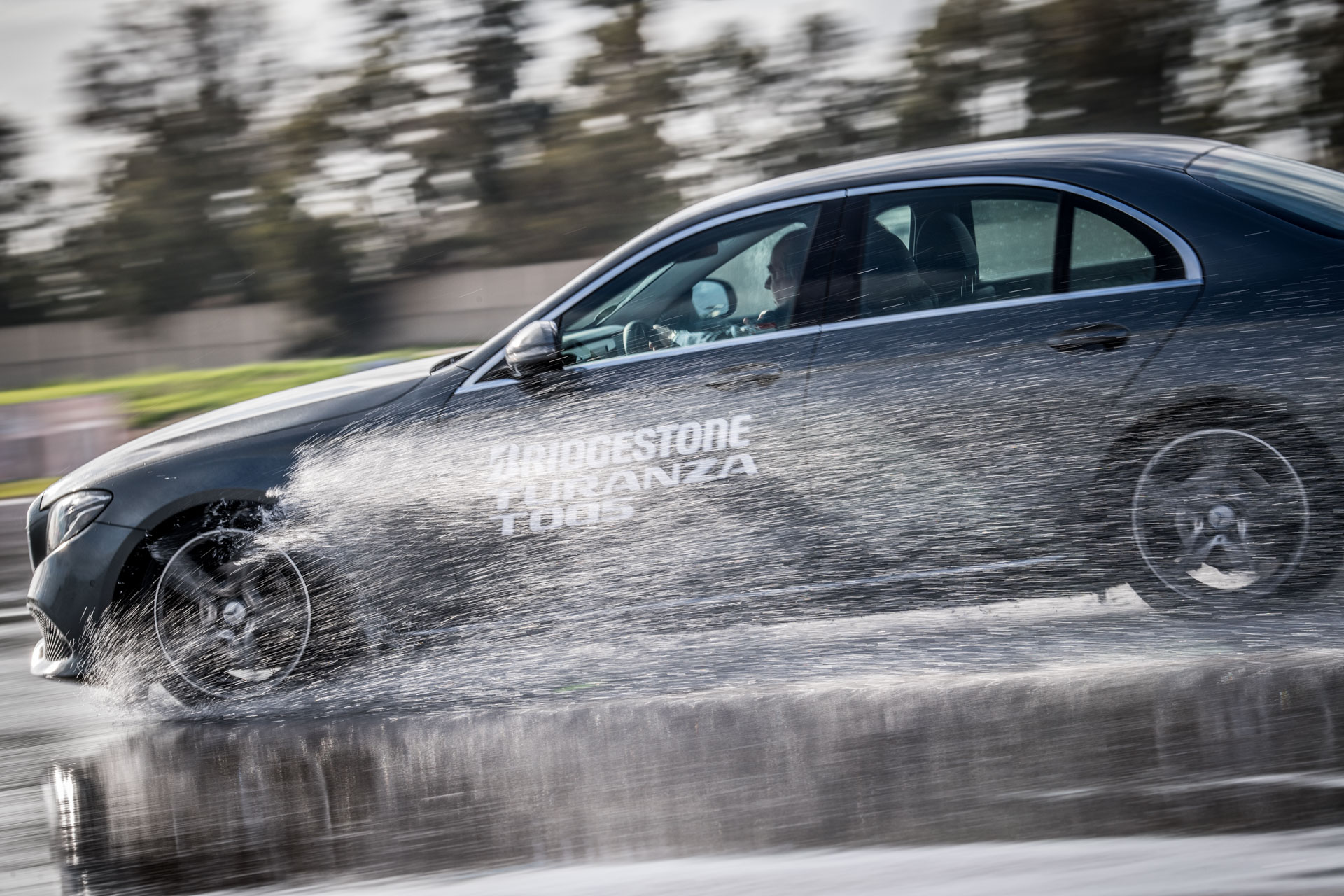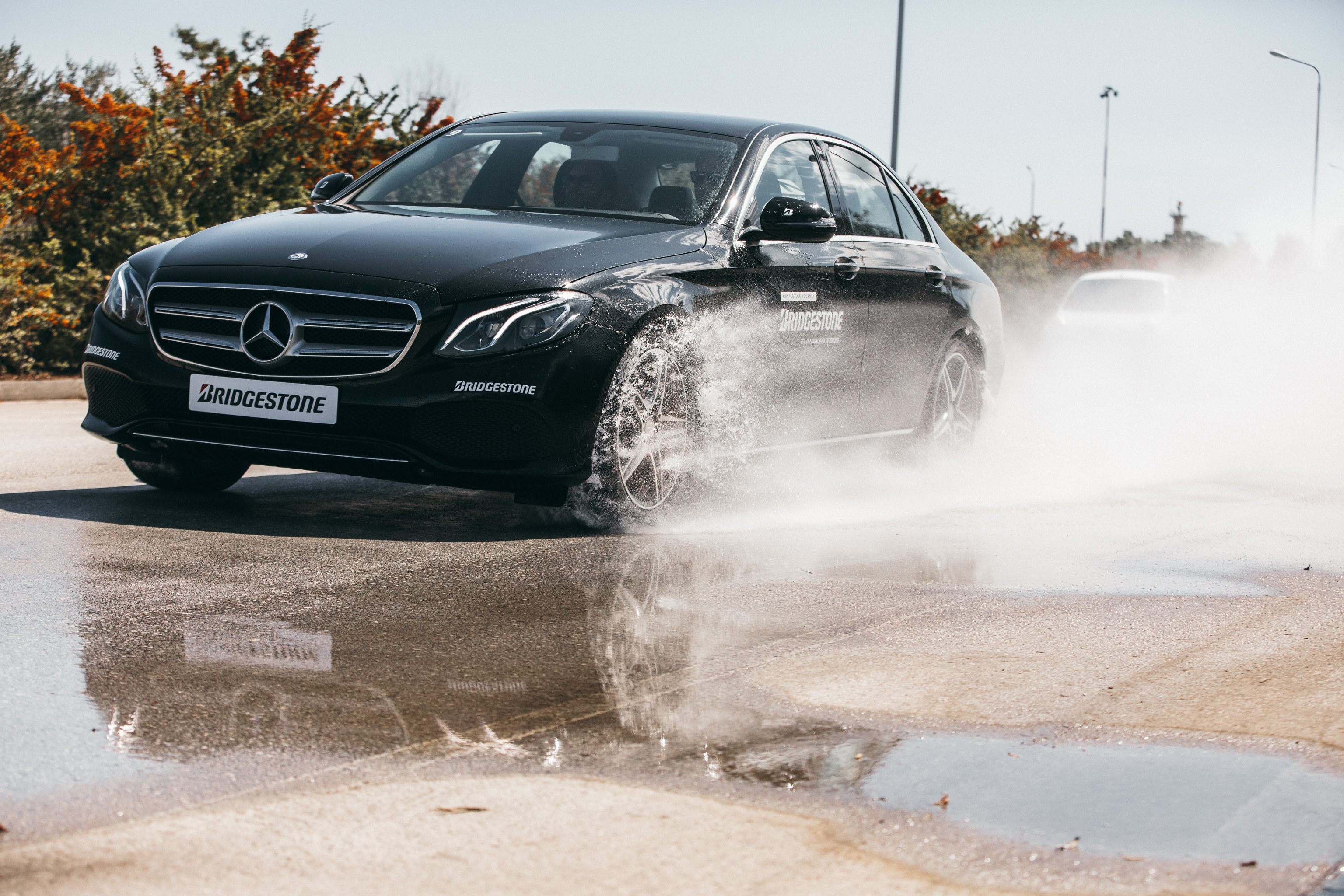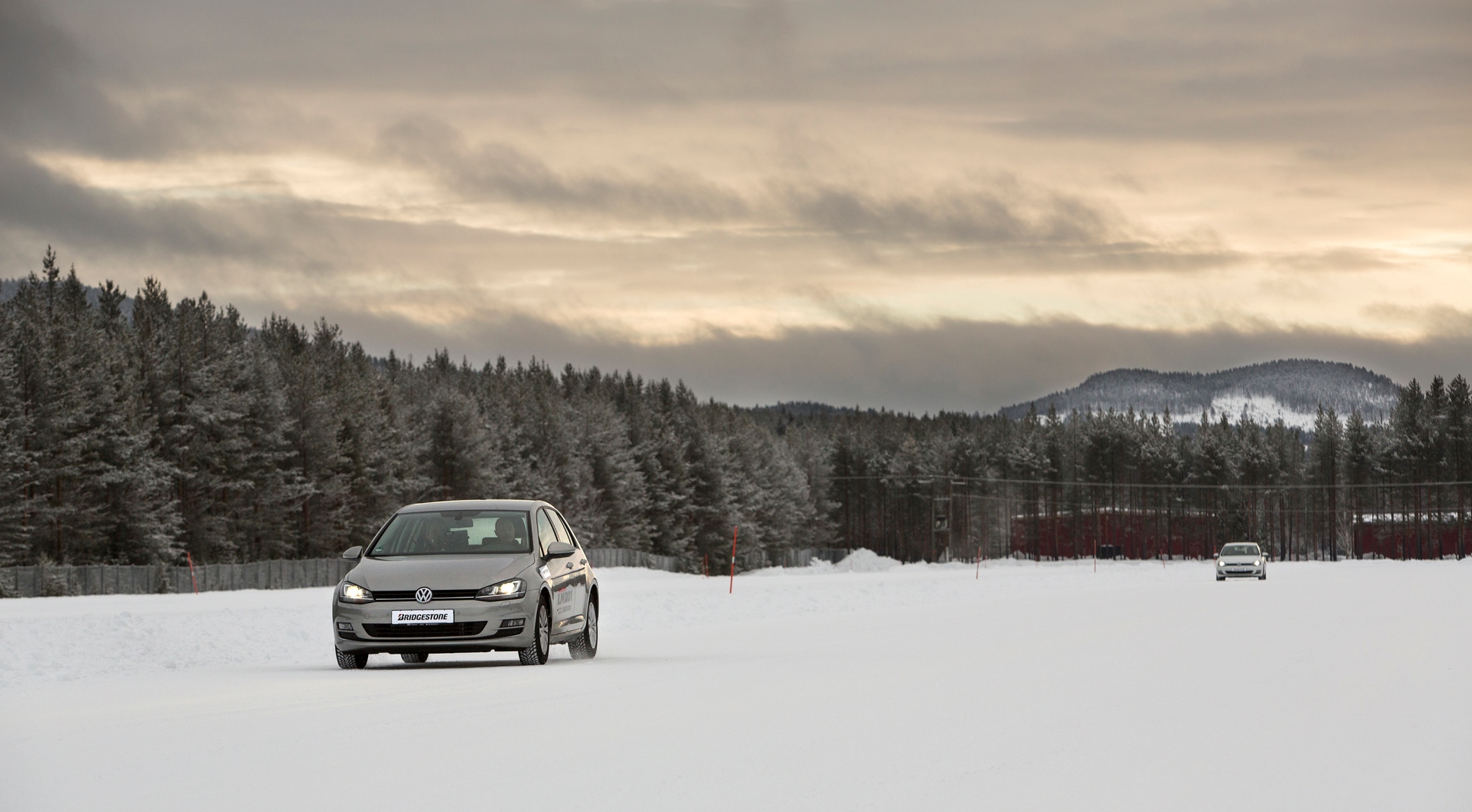
As the autumn leaves fall and the cold winds begin to bite, visions of a long, hot summer can seem like a distant memory.
A pair of shorts and t-shirt might have been convenient a month or two ago, but the thermometer should be dictating your dress-sense these days. And while the tyres on your car might be a slightly less fashionable thought, it is important to think of them too!
More motorists are beginning to contemplate an ‘all-season’ product for UK’s unpredictable climate and manufacturers are reacting in turn, with Bridgestone’s Weather Control A005 EVO an example of the efforts being made to meet a growing demand in the marketplace.
In this blog, we aim to provide an insight into summer, winter and all-season tyres and what your best options are as the temperatures start to fluctuate.
Summer and winter tyres:
Around 43% of European drivers change over to winter tyres for the cold season, with enormous differences by region. While 92% of Poles and 88% of Germans drive on winter tyres, the figure drops to 23% in France and only 8% in the UK. Overall usage of winter tyres in Europe is on the increase, partly because of erratic winter weather in recent years, but also due to new national road- safety regulations. A Bridgestone profile analysis showed that family drivers, particularly parents, are the group most likely to change over to winter tyres every year.
However, despite well-published information that winter tyres do not perform adequately in warm weather, a surprising number of drivers don’t bother to switch back to summer tyres. Further Bridgestone research shows, for example, that almost 10% of Italian drivers stay with winter tyres right through the summer; and this figure rises to 18% in Denmark. The advice from us is simple: Don’t! The fact is, only summer tyres can give you the safety and performance you need in warmer weather.
With their special compounds and tread patterns, winter tyres are designed to stay soft and flexible in cold conditions, providing traction and grip in low temperatures on dry, wet and icy surfaces. But as the temperature rises, winter tyres lose this advantage, grip declines and the tread starts to wear faster.
On the other hand, summer tyres use a harder compound which does not become too soft and sticky on hot roads. In higher temperatures, summer tyres provide better all-round performance than winter tyres, particularly in braking and handling, wear resistance, rolling resistance and fuel economy.
Bridgestone tests show that the performance gap between summer and winter tyres in terms of braking and handling in warmer weather can vary by between 30% and 8% respectively, depending on road conditions and temperature. In wet weather and an ambient temperature of about 30°C, a vehicle fitted with good quality summer tyres has a braking distance up to 30% shorter than a vehicle fitted with winter tyres. In certain conditions, this difference can even equal two times the length of the car!
All-season v summer tyres:
When debating between all-season tyres vs summer tyres, the differences between the two can be easily misunderstood. Depending on your vehicle, driving conditions and personal preferences, one may be a better option than the other. When choosing between summer and all-season tyres, it helps to understand the benefits and limitations of each.
All-season tyres: An all-season tyre offers a balance of capabilities, providing acceptable performance in wet and dry conditions, as well as traction in snow. Built for the average driver, all-season tyres have moderate tread depths and rubber compounds that are engineered to provide longer tread life than summer tyres, which have shallower tread depths. All-season tyres are offered in many types/models, sizes, load capacities, and speed ratings for use on a wide variety of vehicles from economy cars to sedans to mini-vans to pickup trucks. They tend to provide ride comfort, handling, and other performance attributes suitable for most drivers. All-season tyres perform reasonably in warm weather, but they may offer less grip than summer tyres, sacrificing some steering, braking, and cornering capabilities. This trade-off is necessary for all-season tyres to be able to provide acceptable performance in light winter conditions and provide longer tread life. All-season tyres are capable of providing traction in winter, but are not the best tyre to use in extreme winter driving conditions. Drivers who encounter extreme winter weather may want to consider switching to snow tyres in the winter.
Summer tyres: Ideal for high performance vehicles and are built for speed and agility. They offer increased responsiveness, cornering, and braking capabilities. This is typically attributed to specialised tread patterns and rubber compounds that allow for improved precision on the road. The tread patterns of summer tyres have less grooves and put more rubber in contact with the road. They are designed to provide maximum road holding grip. The tread compounds of summer tyres are designed to remain more flexible, allowing for better traction and grip. Summer tyres may have shallower tread depths that allow for more stability when pushed closer to their limits. Dimensional characteristics (such as the tyre’s width, aspect ratio, and rim diameter), speed capability, and other design features make summer tyres more suitable and capable for increased performance in wet and dry conditions on high-performance, sports-oriented vehicles. Summer tyres also provide better performance in wet driving conditions, thanks to unique tread patterns that help evacuate water and resist aquaplaning.
Choosing the right tyre:
Choosing the right tyre isn’t as simple as mounting a set and never looking back. When contemplating summer, winter and all-season tyres, consider your driving conditions, the climate you live in, and performance needs. It is best that all tyres on your vehicle are the same type of tyre – such as winter tyres, all-season tyres, summer tyres, etc…. Your vehicle’s tyres should meet the manufacturer’s recommended size, speed rating, load capacity, as well as any other recommended specifications.
What we’d recommend this winter:
Bridgestone’s Weather Control A005 EVO tyre. It has been designed to deliver year-round control, safety, and convenience – but has been reengineered to offer additional performance benefits.
The Weather Control A005 EVO is capable of handling everyday driving challenges across all four seasons without compromising on wear performance. In fact, the Bridgestone Weather Control A005 EVO offers the same superior wear life as many premium summer tyres.
Featuring a new compound formula, the Bridgestone Weather Control A005 EVO delivers a snow traction force that is improved on its predecessor, a better snow braking distance and a slalom acceleration that is superior, too. The tyre is also certified by the renowned 3 Peak Mountain Snow Flake (3PMSF) marking.
For more information about Bridgestone Weather Control A005 Tyres call click here .



Calls may be recorded for training and to ensure the best quality customer service.
TYRE BRANDS
Bridgestone - Firestone - Avon - Michelin - Pirelli - Continental - Davanti - Ceat